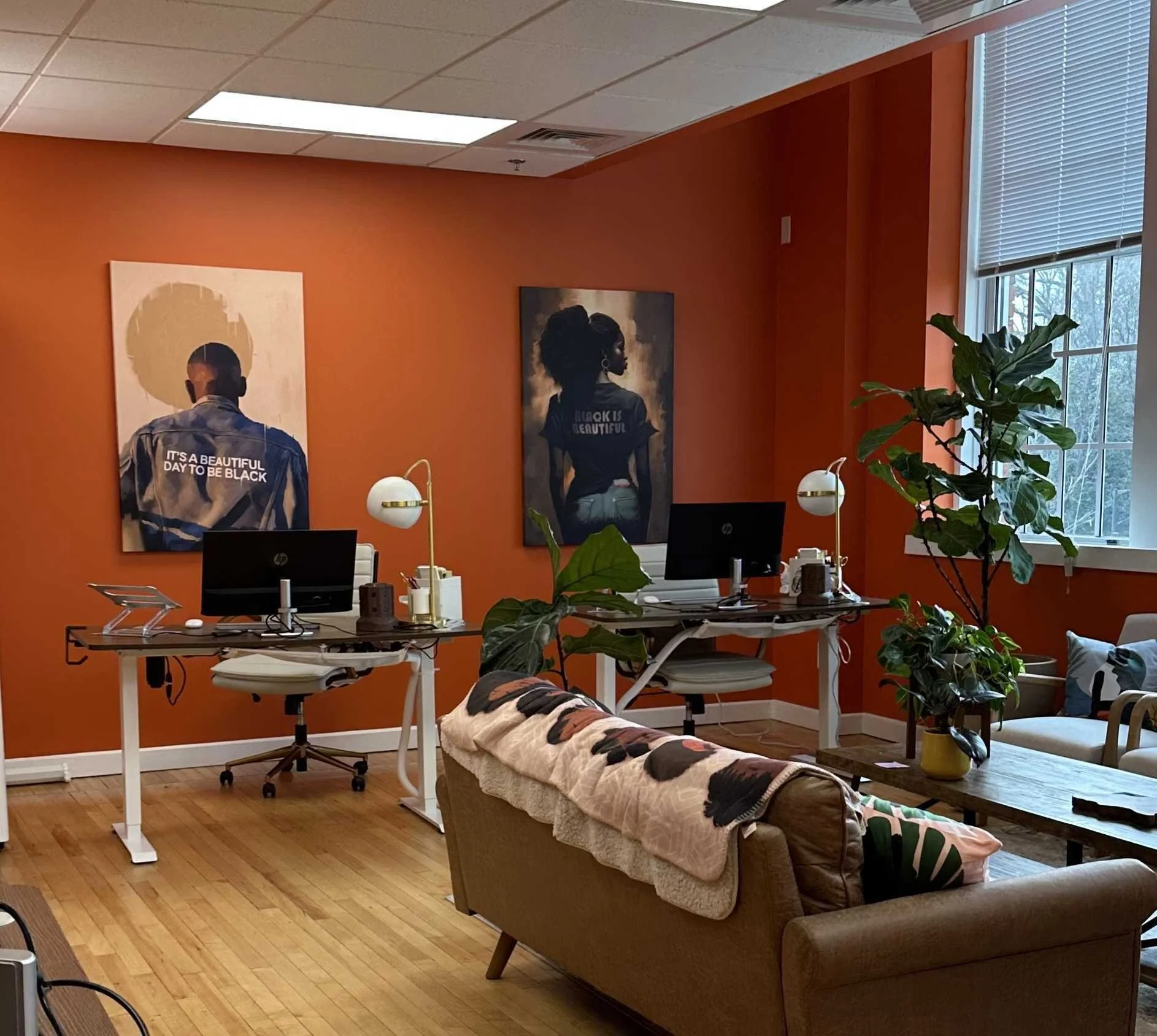I2I's Heart-2-Heart on Evaluation During Chaos, Durham's Black History, New Client Spotlight
Hey friends,
We know it’s been a rocky start to 2025, but we hope you are feeling the love this season. Whether it's from a partner, friend, colleague, house plant, pet, or your absolute favorite monthly newsletter (hehe), we’re here to remind you that love—in all its forms—matters. 💛
Welcome to Intention 2 Impact’s Heart-2-Heart — our monthly newsletter where we share what’s on our mind, in our hearts, and up our sleeves. In this edition, we brave the shifting winds of our Federal Government, uplift some powerful facts from our team’s recent trip to Durham, NC, and reveal I2I’s newest client!
On Our Minds
Like many of you, we’re spinning in circles trying to navigate all the changes since the Trump administration started issuing executive orders faster than the TikTok ban 🙄.
In the guise of “government efficiency,” the administration has been slashing and freezing budgets of social programs, with dire consequences on marginalized and oppressed communities worldwide.
As evaluators, this has us reeling and wondering what criteria were used to define “efficiency”?! And “efficiency” for who?! What data are they using to make decisions about efficiency?! Whose voices are included in decision-making?! Spoiler alert: it is definitely not the voices of those most impacted by these executive orders.
VALUing is the heart of eVALUation. Before any evaluation activities, we start by understanding the values driving evaluation questions, criteria, methods, and decision-making… which, of course, begs the question: whose values?
If a democratic government is intended to be “by the people, for the people” (shout out Abe Lincoln circa 1863), and thus, people are the source of the government’s power… then people, especially those most impacted, should be the ones to define what success (and efficiency) looks like.
In our PoV, at the very least, there needs to be a helluva lot more voices at the table than the current cast of Ivy League-educated business tycoons.
So, what are evaluators to do when we witness those with the most influence blatantly ignoring any criteria and data rooted in the reality and dignity of the majority of people in communities? No, we cannot just cry into the abyss…
Evaluators can either roll over and let our work be weaponized to do more harm, OR we can play an active role in our spheres of influence to support the work of organizers and mobilize a resistance.
All week our team has been digesting the article “Left Organizing Is in Crisis. Philanthropy Is a Major Reason Why.” The author poses a ton of juicy critiques of how we found ourselves in the current catastrophe (which could constitute I2I newsletter topics for the rest of the year), but what is more striking is their provocation of “So if what we’re doing isn’t working… what would?”
The author makes the case for bolstering the “strategic capacity” across the entire philanthropic funding ecosystem of folks who have power to move or influence the movement of money. They cite the work of long-time activist Marshall Ganz, and his identification of conditions necessary to build “strategic capacity”, which include “better access to salient knowledge,” and “deliberations [that are] venues for learning.”
The author concludes with: “The left needs a model of philanthropy motivated fundamentally by rigorous learning.”
✨If you are an evaluator, your Spidey senses should be tingling right about now.✨
As evaluators, we can double down on our role of supporting funders and social innovators in “practicing a culture of inquiry, honesty, curiosity, and experimentation,” and thus serving as conduits for stronger “strategic capacity.” And central to this is raising the voices and those most impacted by oppressive systems and executive orders.
Here at I2I, we are all-in on this charge.
For the rest of y’all, what’s your take? What else should we be reading, doing, and unlearning to resist the current political winds and get more voices to the table?
In Our Hearts
At the end of January, I2I team members, Kathleen and Ashley made their way to Durham, North Carolina for a project with the Blue Cross Blue Shield North Carolina Foundation, focusing on ending exclusionary discipline for Black & Brown children in early childhood education. The city blew them away - the brick buildings, warm people, delicious food, and rich history of Black excellence!
Photos from one of the project’s sites: The W.G Pearson Center. This center was built in 1928 as an historically Black elementary school during segregation in Durham. It is now a pillar of Black excellence, joy, & inspiration in the community.
In the spirit of Black History Month, here are a few powerful facts they brought back from their time in North Carolina:
Black History isn’t just part of Durham’s story - it IS Durham’s story. Picture this 📸: in the late 1800s & early 1900s (only ~30 years after slavery ended), Black Wall Street in Durham was ✨THRIVING! ✨ We’re talking Black Americans building their own businesses, supporting their communities, making MAJOR moves. Durham had a national reputation for entrepreneurship; at one point Parrish Street was lined with over 200 Black-owned businesses.
Durham is home to The NC Mutual Life Insurance Company, one of most successful Black-owned insurance companies in the US. This company was not only a Black-owned business that served the community, it was revolutionizing it! When they built the NC Mutual Building in the 1960s, it was the tallest building in Durham and was named to Fortune’s Top 10 Building of the Decade. It is NOT just another building - it is a whole statement! 👏
Inside the NC Mutual Building lobby there is an exhibit that further details the history & legacy of Black excellence in Durham. One placard states that Durham is home to one of America's remaining 23 Black-owned banks. While the number of Black-owned banks has decreased significantly (from 100+ during Black Wall Street's peak, to 60 in 1985), the NC Mutual Building stands as proof of what's possible when communities maintain control of their financial resources. This makes supporting and growing Black-owned financial institutions more crucial than ever.
If you're ever in Durham, trust us, you'll feel this incredible legacy the moment you hit the streets & connect with those who call it home.
The spirit of Black Wall Street? Still very much alive and strengthening! ✨
Up Our Sleeves
NEW CLIENT SPOTLIGHT 🔦 World Education Services’ Miriam Aseefa Fund 🔦
A bright spot of February was launching a new monitoring, evaluation, and learning (MEL) partnership with Miriam Aseefa Fund!
Started in 2019 by the World Education Service (WES), the Fund is the philanthropic arm of WES. Distributing over $32M in grants in 5 years, the Fund supports catalytic efforts to create more inclusive economies for immigrants and refugees in the U.S. and Canada. Seems pretty darn important during these times, right?
Team I2I will co-create a values-aligned MEL framework for the Fund to measure the progress of its strategies and create spaces for the Fund to learn alongside their grantees. We are honored to be working with yet another organization that is not backing down from their commitments to center justice, equity, diversity, & inclusion.
Onward and upward, y’all!
You know, heart-2-hearts are supposed to be a 2-way street…
So comment below, what’s on your mind, in your heart, and up your sleeve? Hopefully a lil’ bit of good trouble. 😉
Subscribe to the newsletter here!
Until next time,
Intention 2 Impact






